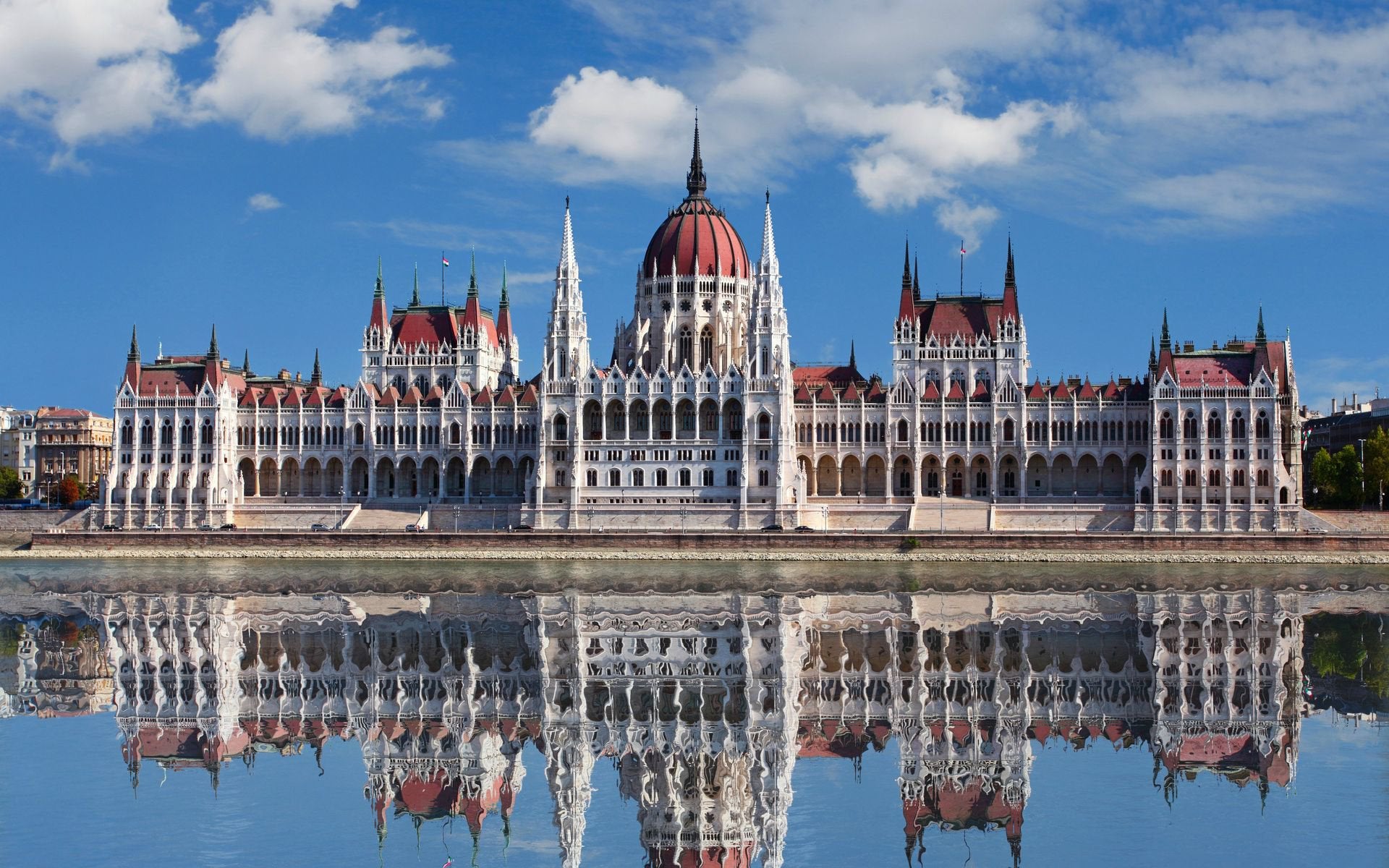History
Quick Facts
Location: Budapest, Hungary
Architect: Imre Steindl
Date Built: 1885-1902
Length: 268mm
Width: 123m
Height: 96mm
What Society Built it: Kingdom of Hungary (Austro-Hungarian Empire)
Why it was Built: To house the Hungarian National Assembly

What it Is
Országház (literally House of the Nation), majestically overlooks the banks of the Danube as the seat of the National Assembly of Hungary. Built in the Gothic Revival style by architect Imre Steindl, it sits in the capital city of Budapest as the largest building in the country. Inaugurated at the 1,000th anniversary of the Hungarian nation in 1896, it has housed the various governments that have ruled the nation in recent history, from the elitist representative Diet of Hungary, to the Socialist, Soviet-dominated Assembly, to the modern Assembly. In a similar vein, it has seen many of Hungary's major historical events in the past century, from the fall of Austria-Hungary and the creating of the Hungarian Kingdom, to the declaration of the Hungarian Republic by Mátyás Szűrös on its balconies. With 691 rooms and being designed to house a bicameral government, the current unicameral government meets only in the lower house, and does not use much of the building. Housed inside the the building are the Holy Crown of Hungary — which crowned the kings of Hungary since the 12th century, and adorning its walls and windows are statues and coats of arms of Hungarian and Transylvanian rulers, along with some of Hungary's most famous military leaders.
The Hungarian National Assembly
The various forms of the Hungarian nation have had something resembling a national legislative body since the 11th century, when the Diet of Hungary first convened. By the late 13th Century, it became the supreme legislative body of the Kingdom, and was an integral part of the legislative process. Participation in the early Diet was a privilege of the nobility and ecclesiastical circles and as such tended to skew towards their interests. The Diet was typically convened by the king, and often times it was convened simply as a forum to announce the King's will and had little power of its own. As most Hungarians did not have representation in the Diet, it could pass harsh, discriminative laws without concern for any consequence, exemplified by a 1514 law in response to a peasant revolt, where the Diet condemned serfs to eternal bondage and increased work obligations without their input. The Diet continued meeting regularly until the Hungarian Revolution of 1848, where it was dissolved by a Habsburg army and Hungary placed under martial law. It was not reconstituted until 1867 upon the Austro-Hungarian Compromise, after which it was constituted as a bicameral legislature consisting of a House of Magnates, representing hereditaries and church figures, and a House of Representatives that were elected by landed elites consisting of only 6% of the population. Following the defeat of Austria-Hungary in the First World War, the Diet reestablished the Kingdom of Hungary, but for its entire existence did not have a king; the Diet abolished the former royal House of Habsburg's rights to the throne and in reality, it was ruled by a regent who essentially acted as a dictator. Following the Second World War, the country came under Soviet domination, and its National Assembly reflected its will, writing a nearly identical constitution to that of the Soviet Union and becoming a unicameral legislature. The modern Assembly took form following the fall of the Hungarian People's Republic, though it has been modified via legislated changes in Hungary's constitution in recent years.
Facts
During construction, it was intended for the building to represent Hungarian achievement and power, it was created with Hungarian materials with the work of over 100,000 people, mostly domestic craftsmen. No expense was spared in construction, over 40 kilograms of 22/23-carat gold and half a million precious stones were used for decoration.
During the communist People's Republic of Hungary, a red star was placed on the dome, though this was removed in 1990 after the fall of authoritarian Socialist rule in Hungary.
Imre Steindl, the architect, never saw the completion of his masterpiece. He went blind and died before its completion in 1904.
The two halls of parliament in which the old bicameral Assembly met are identical, evoking a sense of equality between the two houses. The current Assembly meets in the lower house, while the upper house is used as a conference room.
Its height of 96m was intentionally chosen to represent the nation's millennium in 1896, which refers to the founding of the Grand Principality of Hungary in 896 from a confederation of Magyar tribes.


